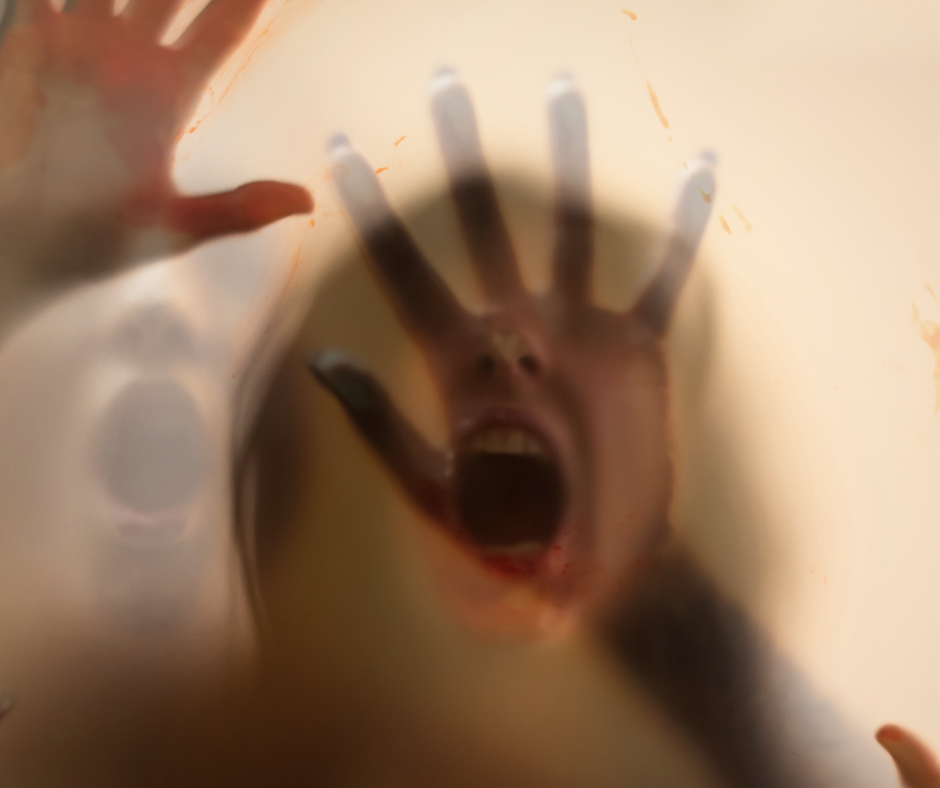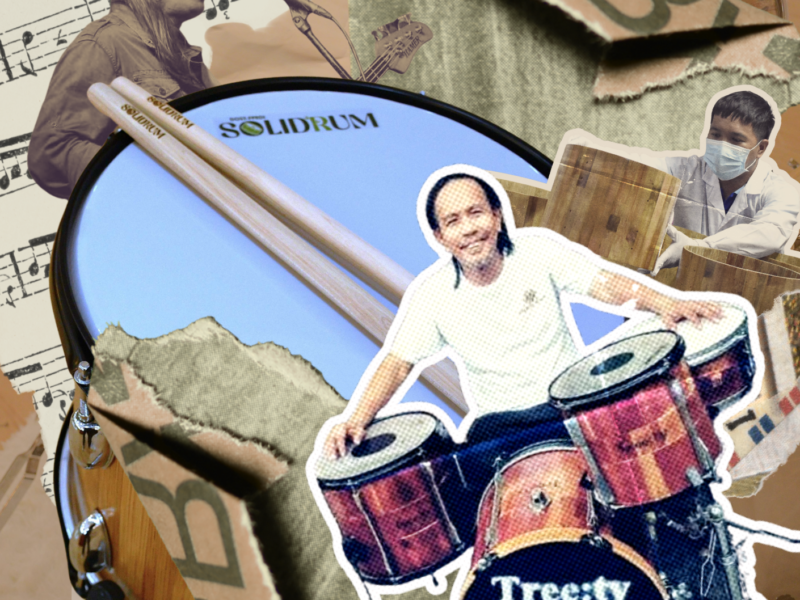You know of the ones that cut their bodies in half and fly off. But do you know of the ones that tickle you to death?
Humans tend to cope with the horrors of life by believing in the existence of monsters.
Various versions of this have appeared throughout history. Food insecurity, rampant illness, and tragedies befalling communities have often been blamed on supposed creatures lurking in the dark. And if not them, blame falls on those that communities can easily ostracize—from the weak to the different to the remote. Such coping mechanisms often lead to unsavory acts, but they are acts nonetheless—and by virtue of that, they become expressions of power set against a backdrop of powerlessness.
Across cultures, monsters have never been mere figments of imagination; they are mirrors reflecting the parts of ourselves we’d rather not face. To believe in them is to make sense of the chaos—to trade the unpredictable cruelty of the world for something with rules, even if those rules belong to the dark.
This is apparent in the Philippines, where myth and memory have long blurred into a single living folklore. For centuries, Filipinos have peopled their nights with beings both terrible and tender—spirits that punish neglect, avenge the forgotten, and remind mortals of their smallness. The familiar names—the Aswang, the Manananggal, the Kapre—have become shorthand for the nation’s folklore, exported and repeated until they’ve lost their sting. But beneath those towering legends lie other creatures, quieter and stranger, who haunt the margins of the country’s imagination.
These lesser-known beings emerge not just from darkness but from the cultural tensions that birthed them: between life and death, beauty and decay, reverence and fear. They are fragments of an older cosmology—whispered warnings from a time when the unseen was as real as the soil underfoot. To revisit them now is to know our people, to rediscover the stories that once kept us safe—or at least, safely afraid.
Berbalang
On an island once called Cagayan de Sulu—a place we now know as Mapun—the bodies of both the living and the dead were supposedly never safe.
This is because of the Berbalang.
They were written about in the Journal of the Asiatic Society of Bengal, in an article by Ethelbert Forbes Skertchly—an officer of the British Navy and the son of scientist Sydney Barber Josiah Skertchly. The Berbalangs were described as ghoulish beings who fed on human flesh. They supposedly lived in a village at the center of the island and were distinguished by their wings and their eyes, whose pupils were slits—like those of a cat.
Skertchly wrote that they moaned, loudly from a distance, and that the sound would fade as they approached. Those nearby could hear the beating of their wings and see the flashing light of their eyes. When hungry for human flesh, the Berbalangs were said to dig up graves and feast on the entrails of the dead. And when graves ran empty, they turned their appetite toward the living. They supposedly hid in grasslands, held their breath, and entered a trance-like state—allowing their astral selves to separate from their bodies and possess human hosts, devouring them from within.
“The Cagayans live in great fear of them,” Skertchly wrote, adding that they had discovered ways to protect themselves. Protection, it was said, was granted to those who possessed a coconut pearl—a supposed botanical gemstone produced by coconuts, though proof of its existence remains unverified. Those who wished to fight back, meanwhile, were told to strike the creatures with a kris rubbed in lime juice, and to sprinkle lime juice on graves to ward them off.
“If you see the lights and hear the moaning in front of you,” Skertchly advised, “wheel fast and make a cut in the opposite direction. Berbalangs always go by contraries and are never where they appear to be.”
Whether Skertchly’s account was colonial fantasy or a distorted retelling of local folklore is beside the point—the Berbalang have lingered. They now live in the porous boundary between anthropology and nightmare, one of the Philippines’ strangest mythic offspring. Their story endures not because it was believed, but because it still feels possible: that on some low-key island at the corner of the Sulu Sea, when the wind moans and the trees flash with strange light, something still roams the night. Those who can run, should. Those who can’t are either dead—or soon will be—and even that won’t save their bodies from the hungry.
Amanlahig
Throughout history, only a few people have died of laughter—but there’d be more of them if one were to take Visayan folklore as canon.
It’s all because of what we call the Amanlahig.
To know them, one must first know of the Aswangs—the shape-shifting creatures of Philippine myth. Supposedly, before they die, Aswangs must transfer their monstrosity to another. Those who fail to do so will reanimate from the grave—stiff-legged and rotting, compelled only by hunger and unfinished business.
They appear deceptively human at first—until you glimpse the elongated canines and the unnatural rigidity of their limbs. One version of the tale holds that they chase their victims in a straight line, unable to bend their knees properly, so the only hope is to zigzag away or climb a gnarled tree. Deep water, meanwhile, is their undoing: a plunge dissolves them into worms and maggots.
In all these tales, however, they bring death. Some say they suck the blood of their victims through the nose, turning their prey into Amanlahigs as well. Others say they act like vampires, draining blood with a bite. But the most curious version has them killing by tickling their victims to death.
The Amanlahig, however, are more than scare stories. They feel tied to cultural anxieties about death, burial, the community’s duty to the deceased, and the fissures left when ritual or kinship fail. They’re beings born of neglect. In a single fearful figure, you see the failure of transmission—of power, lineage, and care—and the consequences thereof. To tell the tale of the Amanlahig is to remind ourselves that in the deep-night stillness of the archipelago, the shadows around the grave are as potent as the shadows within the heart. And they are no laughing matter—at least until they cause you to do so.
Dalaketnon
While many creatures of Philippine folklore are known for their monstrosity, a few are known instead for their beauty and grace.
Enter the Dalaketnon—our answer to the elves of Western myth. They don’t crawl or creep like the monsters of the countryside; they glide—graceful, perfumed, and impossibly poised. Their name comes from the dalakit, or balete tree, whose roots supposedly coil deep into the underworld. Behind those ancient trunks lies another realm, ruled by these pale-skinned nobles who look human—but only just.
The Dalaketnon are charmers and deceivers, the kind who show up at village feasts dressed finer than anyone else, moving with a grace that feels slightly unreal. They invite you to dine beneath the balete’s shadow, offering food—particularly black rice. To eat what they serve is to forfeit the world you know. Guests who partake vanish into the forest, never to be seen again, for they have become slaves to these opulent beings. Some whisper that those who stay too long among them become like them: lovely, eternal, and quietly monstrous.
But the Dalaketnon are more than fairy-tale predators. They are mirrors of the archipelago’s oldest tensions—our awe of refinement, our suspicion of beauty that comes from elsewhere. In them lives the anxiety of being seduced, of losing one’s soul to the allure of the polished and the foreign. They are folklore’s aristocracy of the damned, reminding us that in the Philippines, danger rarely arrives fanged or foul-smelling. Sometimes, it smiles, offers you a seat, and food. How very Filipino.
Sigbin
How do Filipinos get children to behave during Holy Week?
Fear, often, is the method—and sometimes it takes the form of what we now associate with a kangaroo.
In the rural nightscapes of the Visayas and Mindanao, where the air grows thick with the smell of wet earth and superstition, the Sigbin—or Sigben, depending on whom you ask—comes out to feed. It’s a creature of unusual physique: said to walk backward, head bowed between its legs, its large ears clapping like applause from some invisible audience. Those who’ve smelled it describe a stench so foul it announces its presence before the eye can find it. Not that sight helps much; the Sigbin is said to vanish at will, invisible to humans except, perhaps, to the very unlucky. It doesn’t bite or claw. Instead, it drains blood from a person’s shadow.
Holy Week—that uneasy season when faith and fear mingle most potently—is when the Sigbin is believed to emerge from its lair. It stalks for children then, killing them for their hearts—organs it fashions into amulets, charms of unholy protection. The story doesn’t end there. Some say certain families, the Sigbinan, keep these creatures as familiars, stored in clay jars and fed like exotic pets. Others claim the Aswangs keep the Sigbin as a kind of bloodhound or companion. There’s even a rationalist’s version of the tale: that the legend springs from sightings of a real, misidentified species—perhaps a wandering kangaroo that somehow leapt across eons and oceans to land on Philippine soil.
The Sigbin, then, sits somewhere between nightmare and biology, halfway between The X-Files and The Brothers Grimm. It’s both too ridiculous and too precise to dismiss: a hornless goat with a whip-like tail, a creature of impossible posture and improbable lineage. But beyond its monstrous quirks, the Sigbin endures because it gives shape to an old and familiar dread—the suspicion that evil isn’t a foreign invader but a domestic animal, quietly bred and secretly kept. In the end, the Sigbin’s most terrifying quality may not be its backward gait or invisible body, but the thought that someone, somewhere, might still be feeding one.
Death from Above
For years, the Manananggals have ruled the skies of Philippine folklore—but they aren’t the only ones who cast their shadows from above.
In the scattered towns and quiet farmlands of the Philippines, where the night hums with the drone of insects and distant sea winds, people once listened for a sound that could mean death: “wak-wak” or “ek-ek.”
The former was said to be the sound of beating wings—the telltale sign of a creature that fed not on fruit or prey, but on hearts. The Wakwak, as the stories go, is a vampiric, birdlike creature, its wings knife-sharp, its talons built to tear. Unlike the more famous sky terror, the Manananggal, the Wakwak cannot separate its torso from its body, but its appetite is no less gruesome. The quieter the sound of its wings, the closer it is. Loud meant safety; silence meant the monster was already above you.
Sometimes, people mistook it for another creature entirely—the Ekek, another winged predator that haunted the night skies. Its victims of choice were often pregnant women. The only real difference, villagers insist, lies in the beak—the Ekek has one, the Wakwak does not. And while the Wakwak slashes for hearts with its claws, the Ekek is more surgical, using its long, needle-like proboscis to pierce wombs and drain the unborn of blood. And while this is taking place, a sound can be heard: “ek-ek-ek.”
Like all monsters, the Wakwak and the Ekek’s notoriety is fading. Today, most Filipinos hear that strange flutter in the dark and think only of birds, not vampires. The sound that once emptied roads and sent prayers skyward is now the stuff of ghost stories told to children to keep them indoors. Yet the horrors they bring remain lurking in the dark. After all, people can be monstrous, brutal, and noisy in their own ways—even if they can’t take to the skies.
The Real Monsters
Perhaps none of these beings are real; perhaps the monsters of local folklore were only a product of imaginations that ran wild in an attempt to make sense of life’s tragedies. It could also be possible that they were made up—concocted by those who wish to rule through terror. Still, many of the fears they symbolize are real.
Even without the flesh-eating ghouls, the gruesome can occur at the hands of the depraved. Even without winged monsters, something as precious as pregnancy can result to a lifeless pool of blood. Disease is also real; many of them can hollow a person out without the need for grotesque creatures. And people have disappeared. They weren’t taken and enslaved by elf-like creatures. Some were activists critical of those in power; some willingly signed away their freedoms for more financial security. All, however, were human, wronged not by monsters but by people—people who are more than capable of doing monstrous things.



